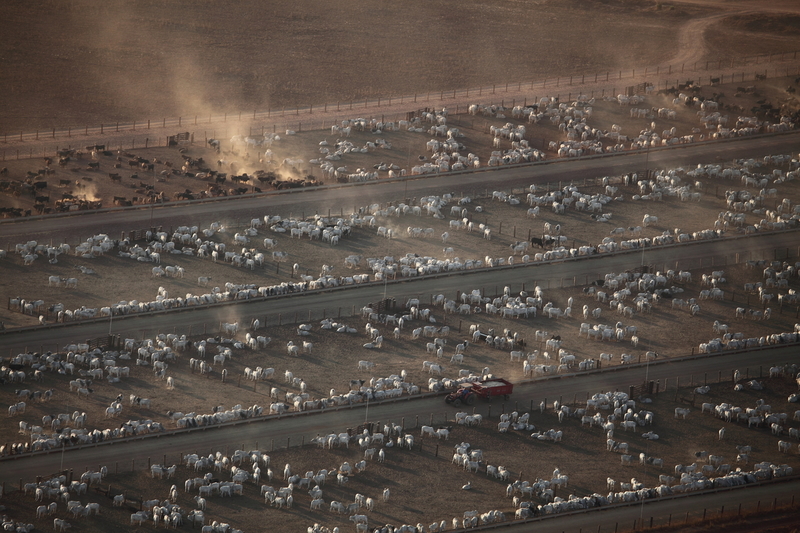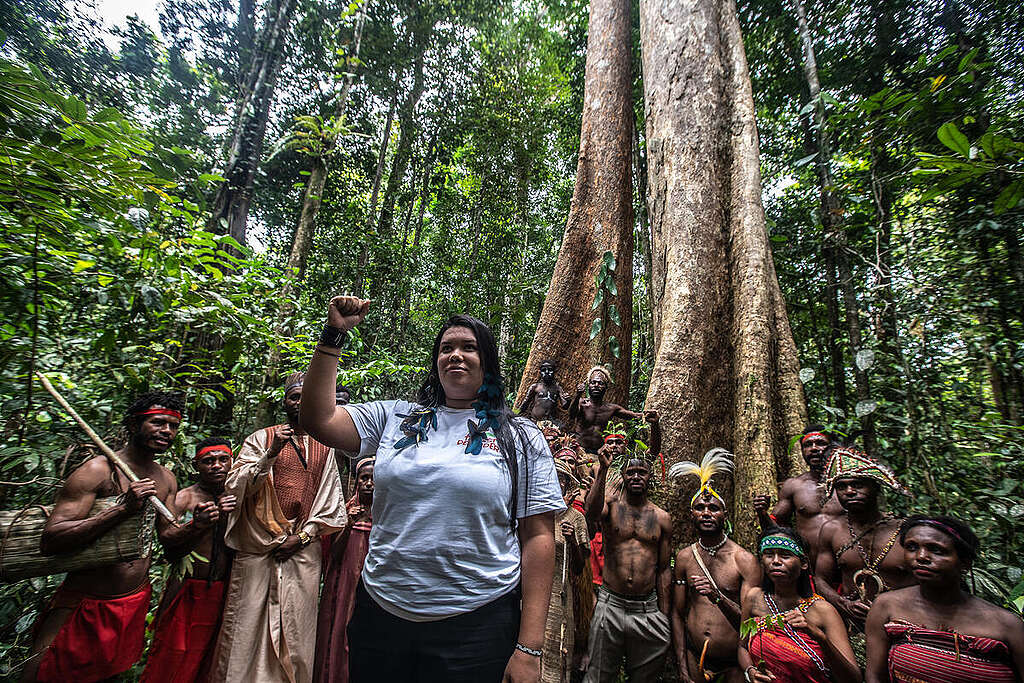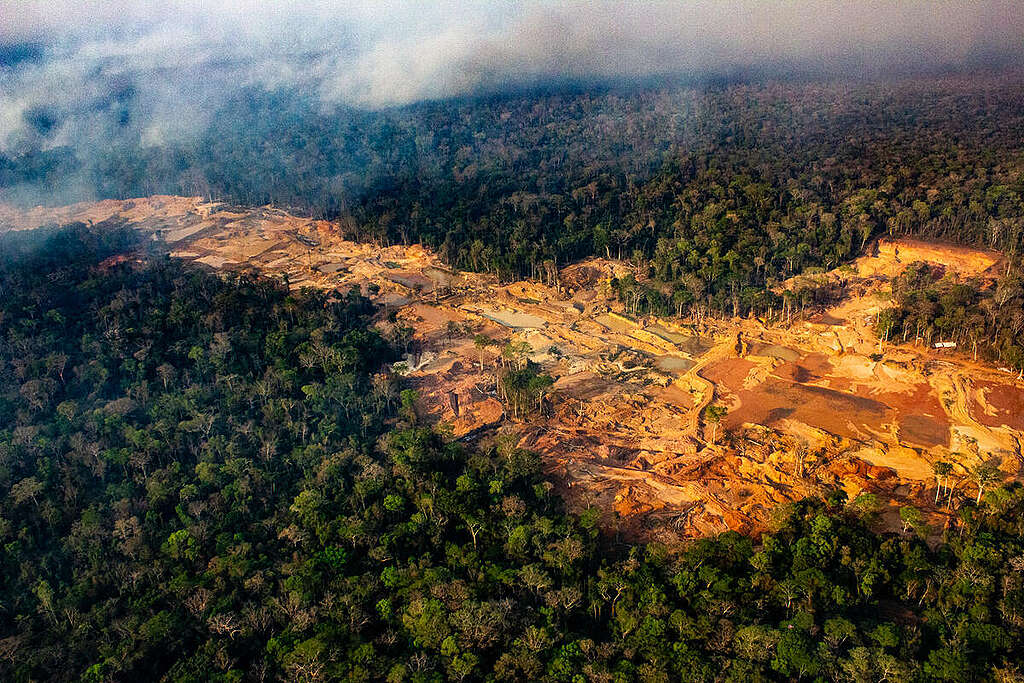A new Greenpeace International report, Toxic Skies: How Agribusiness is Choking the Amazon, reveals how fires linked to industrial agriculture are turning the forest’s air toxic during the dry season. The findings are a stark warning that the Amazon’s crisis is not only about trees. It is about the air millions of people breathe, and the health of our shared planet.
When the sun rises over Porto Velho, on the edge of the Brazilian Amazon, it does not pierce through the mist. It struggles through the smoke. For months each year, the air fills with the haze of fires deliberately set to clear forests for cattle or to renew pasturelands. What was once the world’s greenest ecosystem often breathes air contaminated with higher levels of toxic particles than Beijing, São Paulo or Santiago, according to the report.
What the study found
Researchers monitored air quality in two Amazonian cities, Porto Velho (Rondônia) and Lábrea (Amazonas), combining satellite and ground-based data. The results are alarming:
- During the record-breaking fire season of 2024, levels of fine particulate matter (PM2.5) exceeded WHO daily health guidelines by more than 20 times.
- Even in 2025, a year with far fewer fires, the air still exceeded the guidelines by over six times.
- Between 2019 and 2024, the annual average pollution in Porto Velho was higher than in major global megacities, largely driven by sharp increases in PM2.5 levels during the fire season.
- Around 75% of burned areas around Porto Velho in 2024 are used as pasture for cattle production, showing that most fires are linked to grazing land use.
- More than half of the total burned area in 2024 in the Amazon biome falls within a 360km radius around the facilities of Brazil’s largest meatpacker, JBS. Meatpackers such as JBS do not effectively prohibit and monitor the deliberate use of fire in their supply chains – leaving meatpackers exposed to the risk of indirect or direct supply chain links, including through maintaining business relations, with farms in burned areas.
This is not a natural disaster. It is a business model that profits from destruction and public suffering.
Breathing in the crisis

The Amazon’s fires are not acts of nature. They are deliberately lit to clear forest or renew pastures for cattle. And, behind every statistic are human stories. Hilda Barabadá Karitiana, from the Karitiana Indigenous Territory near Porto Velho, describes how her community lives with the smoke:
During the dry season, the air becomes thick with smoke. Even when the fire is far away, we feel it. Sore throats, constant coughing, and irritated eyes. It affects everyone.
– Hilda Barabadá Karitiana
For people like Hilda, the smoke is not just a seasonal nuisance. It is a public health emergency. Exposure to high levels of PM2.5 causes respiratory infections, heart disease and asthma, especially among children and older adults. The air itself has become an agent of crisis.
Debunking Myths
✘ Fires in the Amazon region occur naturally and are beneficial for the ecosystem.
✔ Fires in the Amazon region are caused by human activity and are highly destructive to the rainforest ecosystem.
✘ Fires in the Amazon happen because of logging.
✔ Vast areas of the Amazon biome are set on fire to make way for cattle ranching.
A turning point before COP30
This year’s COP30, hosted in Belém, on the edge of the Amazon, will be the first UN Climate Summit held inside a tropical forest. It is an opportunity to put Amazonian voices and air quality at the centre of global climate negotiations and to demand that governments and corporations act.
Chief Zé Bajaga, from the Caititu Indigenous Territory, says:
Here in the Amazon, we face invasion, fires and pollution from companies that profit while our land burns. Those who destroy for money must be held accountable.
– Chief Zé Bajaga
What needs to happen now

World leaders need to step up and:
- COP30 should deliver an action plan to implement the UNFCCC’s 2030 target to halt and reverse deforestation and forest degradation of the world’s forests. It’s time to turn commitments into action.
- Governments must urgently regulate the agricultural and financial sectors to ensure their alignment with the Paris Agreement, the Global Biodiversity Framework, and the UN Sustainable Development Goals.
- Governments must ensure the transition to truly ecological and just food systems, an end to deforestation, and the reduction of emissions associated with agriculture, including methane.
- World leaders must ensure funding for real solutions to protect and restore forests by providing finance directly accessible to Indigenous Peoples and Local Communities.
The Amazon’s toxic skies are not inevitable. They are the product of political choices and economic greed. As world leaders prepare for COP30, this is the moment to act.

Respect the Amazon
Ask political leaders to act on their promises to stop Amazon destruction.
Lis Cunha is a campaigner with Greenpeace International’s Respect the Amazon campaign.
Source link
Lis Cunha www.greenpeace.org


